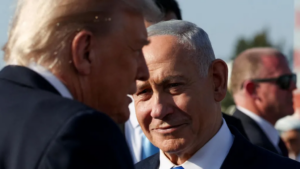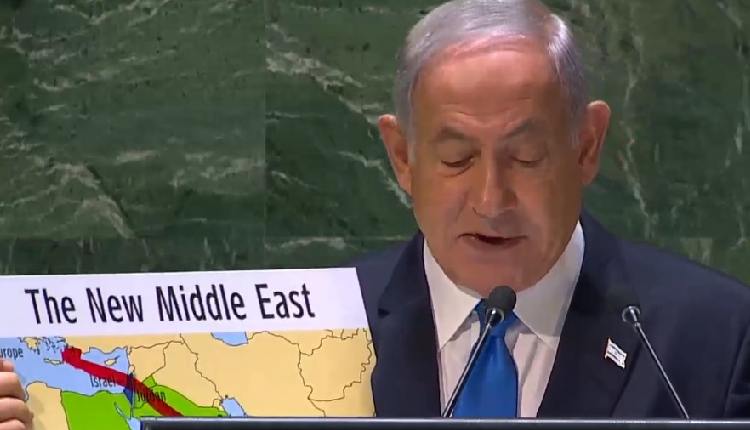
Probably the most unusual thing about the 2019 announcement by the Islamic State naming their new leader was that the chosen figure wasn’t really known for being the battlefield warrior commander. He wasn’t really known at all.
Despite Isis lauding Abu Ibrahim al-Hashemi al-Qurashi as a “veteran jihadist fighter”, Iraqi intelligence officials go as far as to say “he had no real knowledge of combat.”
As one western analyst puts it one of the most striking things about his choice as successor to Abu Bakr Al-Baghdadi, among the most infamous and feared figures in the world, was “how uncharismatic [Qurashi] was”. It was how little reputation he had for time on the battlefield.
Al-Qurashi, 45, the nom-de-guerre of Iraq-born Amir Muhammed Saed Abdel-Rahman al-Mawla, was killed in US special forces raid on his holdout in northwest Syria in the early hours of Thursday morning.
Eyewitnesses told The Independent American soldiers arrived in helicopters, shouted at women and children to leave the building or die, before a three-hour battle, that included gunfire, shelling and airstrikes, unfolded. Us officials and Iraqi Intelligence officials said at the end Qurashi blew himself with a suicide vest, barricaded in with women and children. According to first responders at the scene, at least 13 people were killed, including six children and four women, among them likely his wife and children.
Al-Qurashi had been Isis’s caliph for less than three years. He died in a sleepy Syrian village near the border with Turkey, an area mostly home to people internally displaced from other parts of Syria.
At the time of his death, the US Department of Justice had a $10m bounty on his head – he was described as Isis’s “most senior ideologues”.
Born to an Iraqi Iman in Tal Afar, Iraq, among the youngest in a sprawling family, al-Qurashi followed in his father’s footsteps building as a reputation as a preacher and propagandist: After finishing his 18-month military service in the Iraqi army he joined Al-Qaeda in Iraq, and began teaching classes on Sharia law to its members, before holding multiple religious official roles.
At some point, he joined Isis and climbed up the ranks including effectively being their minister of justice.
But he was no pushover.
He is said to have leveraged his background in Islamic studies – allegedly holding a BA in Sharia from the University of Mosul – to play a leading role in writing religious rulings that “justified” some of Isis’s most heinous crimes, like its capture, mass slaughter and enslavement of the Yazidis in northern Iraq.
There are even rumours he pushed fellow Isis leaders to be more extreme in their views on this, through his religious writings.
He also knew the organisation extremely well, after decades of involvement in the groups and its precursors. According to experts he had taken over the reins of power even before Baghdadi was killed in a US raid in October 2019, particularly after other contenders including al-Baghdadi’s own deputy were taken out by coalition airstrikes.
“He was seen as more of a propagandist than a fighter, it was quite striking about how uncharismatic he was,” Raffaello Pantucci, a Senior Associate Fellow of security think-tank RUSI tells The Independent.
He was seen as more of a propagandist than a fighter Raffaello Pantucci, a Senior Associate Fellow of RUSI
“He was advancing religious ideas, he was more a preacher and a speaker than a strategist and a fighter. He was pretty uncompromising on all the more extremist elements,” he added.
Like much of Isis’s leadership, he too had spent time in a western-run prison where he may have crossed paths with Baghdadi. And so although his nom-de-guerre was entirely unknown, the man behind the name was a bit. He was captured by US-led coalition forces in January 2008 and later released, records of his interrogations still exist.
His short-lived “term in office” was not without controversy.
His birthplace is in an area in Tal Afar, which is generally accepted to be predominantly Turkmen ethnically, fuelling rumours he was of Turkmen origin.
It posed him legitimacy problems as the Turkmen linage would indicate that he could not be from the Qurashi tribe (of the Prophet Muhammad), a prerequisite to being the caliph.
Isis supporters in 2020 dismissed the origin reports as “lies” on their messaging app Tam Tam. It was vehemently rejected by the leadership also.
The question now is what impact his death will have on Isis’s power structure and ability to plan and stage future attacks? The evisceration of such a long-term leading member, with a uniquely deep knowledge of the structure of the organisation can only do some damage.
US Officials, for example, claim he was responsible for orchestrating the recent unprecedented attack on a prison holding Isis militants in northeast Syria.
But it is unlikely to scupper the groups says RUSI’s Pantucci.
“Fundamentally it won’t change the strategic arc of the organisation which is one that is slowly reassembling itself in Iraq and still has a footprint in Syria,” he said.
“It does show that the US is paying close attention and that the West is still willing to keep its organisation on its toes.”
“It does say that the West still pays attention to this.”







